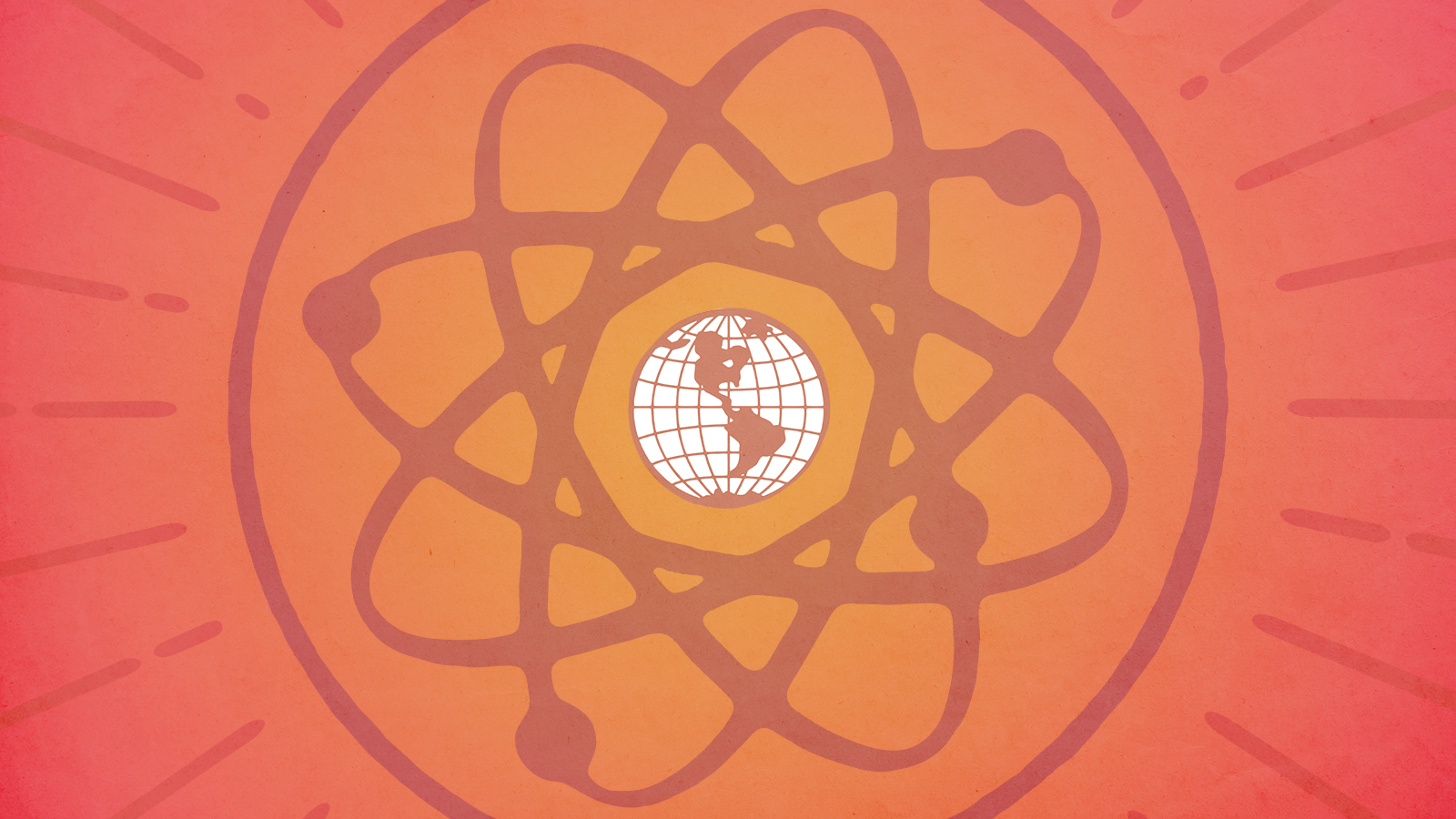Is nuclear fusion finally for real? Some very rich people seem to think so.
All we have to do is solve one of the trickiest engineering problems in human history: recreating the sun here on Earth


America's first Atomic Age ended on March 28, 1979, with the partial meltdown of the Three Mile Island Unit 2 reactor, near Middletown, Pennsylvania. Despite the negligible radiation release, the accident led to canceled projects, industry bankruptcies, and a further public souring on nuclear energy. Nuclear's share of U.S. electricity production has been flat, around 20 percent, for decades.
But the dreams of the most optimistic nuclear proponents were always far bigger than an America dotted with fission reactors, where power is produced by the controlled splitting of uranium atoms. Eventually, fission would be replaced by fusion, the melding of hydrogen isotopes which produces more — much more — energy than it consumes. Then we would have energy's Holy Grail: pollution-free power produced using common (and therefore cheap) elements like hydrogen. No carbon emissions, no long-lived radioactive waste. All we have to do is solve one of the trickiest engineering problems in human history: recreating the sun here on Earth.
That project has been stalled by long years of technical frustration. But now, some of the world's richest people are betting the fusion problem might be solvable sooner rather than later. Earlier this week, Commonwealth Fusion Systems (CFS), a startup spun off from the Massachusetts Institute of Technology, said it had raised nearly $2 billion in private investment, including from mega-billionaires Bill Gates and George Soros. This is the biggest bet on fusion so far, even amid record funding for some two other dozen startups.
The Week
Escape your echo chamber. Get the facts behind the news, plus analysis from multiple perspectives.

Sign up for The Week's Free Newsletters
From our morning news briefing to a weekly Good News Newsletter, get the best of The Week delivered directly to your inbox.
From our morning news briefing to a weekly Good News Newsletter, get the best of The Week delivered directly to your inbox.
The CFS haul doubles the investor dough devoted to those firms, and that includes the previous record of $500 million invested early last month into Helion, a startup backed by well-known tech investors Sam Altman and Peter Thiel. As for CFS, CEO Bob Mumgaard said the new investment would allow it to demonstrate a net-energy fusion reactor by 2025 as well as begin work on the first commercial fusion power plant by the early 2030s.
Replacing dirty fossil fuels with clean power doesn't fully capture the potential of nuclear fusion. Clean, cheap, abundant energy could, for instance, help produce hydrogen for fuel, power giant machines to pull carbon dioxide from the atmosphere, and desalinate water on a large scale. No longer would concerns about energy and climate change limit our aspirations, even if they just involve energy-intensive Bitcoin mining.
And that's just here on Earth. While one could make an argument in favor of other emerging power sources — including advanced fission, enhanced geothermal, even space-based solar power — fusion would be especially helpful if humanity is going to become a space-faring civilization. As physicist Arthur Turrell, author of The Star Builders: Nuclear Fusion and the Race to Power the Planet, told me in a recent interview: "If you look at what realistic trips outside of our kind of solar system's backyard would have to be powered by — or even the Earth's backyard, I should say — fusion is one of the best candidates for that, because it packs a lot of energy into a very small amount of space."
Critics point to past hype cycles and failure, which is totally fair. But the level of private interest, in addition to recent technical advances, should give special reason for hope this time around. Hard-headed, results-oriented investors are sinking big money into the sector because they really think breakthroughs are imminent in a way they haven't been before. Maybe, a decade from now, the world's first $3 trillion company will be a fusion company rather than an online retailer or social media platform.
A free daily email with the biggest news stories of the day – and the best features from TheWeek.com
Moreover, this wouldn't be the first time a long-gestating energy technology suddenly burst on the scene and changed everything. The recent surge in gasoline prices has some politicians recalling the 1970s energy shocks. But there's a more recent example of an energy price spike, although many of us seem to have forgotten it.
A combination of strong demand and stagnant production caused an oil shock in 2007 and 2008, with oil prices hitting a record high of $145 a barrel on July 3, 2008. It was a great time for books and blogs about "peak oil" and how the world was running out of cheap fossil fuels. But then the global financial crisis crushed economies and demand while the "shale revolution" — the combo of hydraulic fracturing and horizontal drilling — simultaneously came into its own. The U.S. significantly increased domestic oil and natural gas production. We innovated our way out of peak oil.
But there are no guarantees fusion will follow that pattern. Sometimes the smart money gets it wrong. The artificial intelligence sector is famous for its boom and busts (also known as "AI winter") where interest soars and investor cash floods in — and then floods out again when the tech fails to deliver. Where are all the self-driving cars that were supposed to be on American roads by now?
The same could happen with fusion. Yet compared to the odds of humans dealing with climate change by consuming less and accepting a slower increase (or even a decline) in living standards, the chances for an Age of Fusion look pretty good.
James Pethokoukis is the DeWitt Wallace Fellow at the American Enterprise Institute where he runs the AEIdeas blog. He has also written for The New York Times, National Review, Commentary, The Weekly Standard, and other places.
-
 Will the mystery of MH370 be solved?
Will the mystery of MH370 be solved?Today’s Big Question New search with underwater drones could finally locate wreckage of doomed airliner
-
 The biggest astronomy stories of 2025
The biggest astronomy stories of 2025In the spotlight From moons, to comets, to pop stars in orbit
-
 Why are micro-resolutions more likely to stick?
Why are micro-resolutions more likely to stick?In the Spotlight These smaller, achievable goals could be the key to building lasting habits
-
 How climate change is affecting Christmas
How climate change is affecting ChristmasThe Explainer There may be a slim chance of future white Christmases
-
 Why scientists are attempting nuclear fusion
Why scientists are attempting nuclear fusionThe Explainer Harnessing the reaction that powers the stars could offer a potentially unlimited source of carbon-free energy, and the race is hotting up
-
 Canyons under the Antarctic have deep impacts
Canyons under the Antarctic have deep impactsUnder the radar Submarine canyons could be affecting the climate more than previously thought
-
 NASA is moving away from tracking climate change
NASA is moving away from tracking climate changeThe Explainer Climate missions could be going dark
-
 What would happen to Earth if humans went extinct?
What would happen to Earth if humans went extinct?The Explainer Human extinction could potentially give rise to new species and climates
-
 Bacteria can turn plastic waste into a painkiller
Bacteria can turn plastic waste into a painkillerUnder the radar The process could be a solution to plastic pollution
-
 Florida has a sinking condo problem
Florida has a sinking condo problemUNDER THE RADAR Scientists are (cautiously) ringing the alarms over dozens of the Sunshine State's high-end high-rises
-
 Diamonds could be a brilliant climate solution
Diamonds could be a brilliant climate solutionUnder the radar A girl and the climate's best friend
